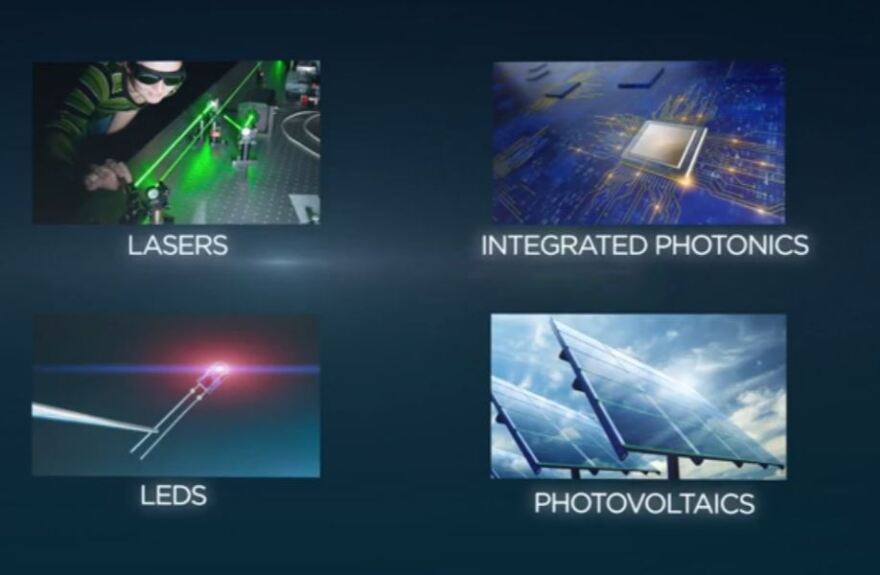The Rochester region is poised to become the photonics hub of the nation, thanks to $600 million in public and private investments that will establish a national photonics institute in the city's downtown.
But those without a science background are at a disadvantage when it comes to understanding not only what photonics is, but also how an industry built up around it will affect the local, regional and national economy.
Time to settle this once and for all: What is photonics?
Paul Ballentine is the executive director at the University of Rochester's Center for Emerging and Innovative Sciences. He says the first step toward understanding the science of photonics is knowing one basic principle: Light exists as both waves and particles.
"It's both, depending on what you're looking at," Ballentine says.
For thousands of years, people have understood light as waves. These waves could pass through and be manipulated by lenses and prisms, and that was the focus of the science of optics.
But that all changed in the early 20th century, Ballentine says, with the theory of quantum mechanics.
"That caused us to think of light not only as waves, but as particles as well. Particles of light. And we call them photons, for the Greek word ‘photos,’ meaning light."
When light hits a solid, it reacts to it like millions of tiny particles bouncing off it. The more we understand and learn about these photons and how they interact with solid matter and each other, the more we're able to manipulate them and invent new technology.

The most commonly known photonics technologies are lasers, light-emitting diodes (LEDs) and photovoltaics (solar cells), but there's an emerging technology, called integrated photonics, that will be the focus of the new Rochester institute.
"The best example of an integrated photonics technology," Ballentine says, "is a new kind of microchip that uses light as well as electrons."
Microchips use electrons to transmit data and information, but electrons are bigger and slower than photons, which move at the speed of light. The idea is to replace some of the electrons on a chip with photons, in order to speed up processing and use less power to do so.
Considering how many devices are equipped with microchips, that impact of integrated photonics would be pretty huge.
But Ballentine says that's only one part of the equation.
“Integrated photonics, along with photonics and optics, will enable more imaging technologies, and imaging really is where the future is at."
Imaging systems are what make all of our cellphone cameras possible. It’s the reason Facebook can recognize your face and Google's self-driving cars can navigate traffic.
"Rochester has the people, the schools and the supply chain to attract these modern imaging companies and really build the future of the Rochester economy."
With the creation of this photonics hub in Rochester, Ballentine says we’ll not only be able to perfect our laser technology and experiment with new microchips, but we’ll also be a one-stop shop for all things imaging.
At least, that's the hope.
This is the first in a three-part series. In the next part, we'll look at the politics of Rochester's photonics institute.






